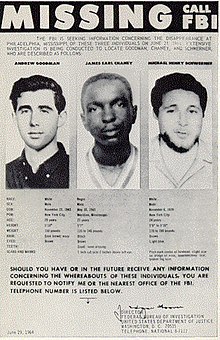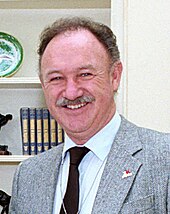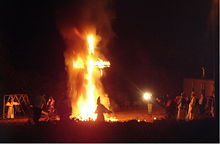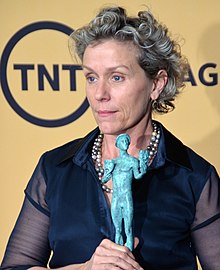
Andrew Goodman was an American civil rights activist. He was one of three Congress of Racial Equality (CORE) workers murdered in Philadelphia, Mississippi, by members of the Ku Klux Klan in 1964. Goodman and two fellow activists, James Chaney and Michael Schwerner, were volunteers for the Freedom Summer campaign that sought to register African-Americans to vote in Mississippi and to set up Freedom Schools for black Southerners.
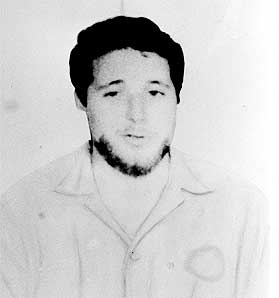
Michael Henry Schwerner was an American civil rights activist. He was one of three Congress of Racial Equality (CORE) field workers killed in rural Neshoba County, Mississippi, by members of the Ku Klux Klan. Schwerner and two co-workers, James Chaney and Andrew Goodman, were killed in response to their civil rights work, which included promoting voting registration among African Americans, most of whom had been disenfranchised in the state since 1890.

Freedom Summer, also known as the Freedom Summer Project or the Mississippi Summer Project, was a volunteer campaign in the United States launched in June 1964 to attempt to register as many African-American voters as possible in Mississippi. Blacks had been restricted from voting since the turn of the century due to barriers to voter registration and other laws. The project also set up dozens of Freedom Schools, Freedom Houses, and community centers such as libraries, in small towns throughout Mississippi to aid the local Black population.

James Earl Chaney was an American civil rights activist. He was one of three Congress of Racial Equality (CORE) civil rights workers killed in Philadelphia, Mississippi, by members of the Ku Klux Klan on June 21, 1964. The others were Andrew Goodman and Michael Schwerner from New York City.

Edgar Ray Killen was an American Ku Klux Klan organizer who planned and directed the murders of James Chaney, Andrew Goodman, and Michael Schwerner, three civil rights activists participating in the Freedom Summer of 1964. He was found guilty in state court of three counts of manslaughter on June 21, 2005, the forty-first anniversary of the crime, and sentenced to 60 years in prison. He appealed the verdict, but the sentence was upheld on April 12, 2007, by the Supreme Court of Mississippi. He died in prison on January 11, 2018, at age 92.

The murders of Chaney, Goodman, and Schwerner, also known as the Freedom Summer murders, the Mississippi civil rights workers' murders, or the Mississippi Burning murders, were the abduction and murder of three activists in Philadelphia, Mississippi, in June 1964, during the Civil Rights Movement. The victims were James Chaney from Meridian, Mississippi, and Andrew Goodman and Michael Schwerner from New York City. All three were associated with the Council of Federated Organizations (COFO) and its member organization, the Congress of Racial Equality (CORE). They had been working with the Freedom Summer campaign by attempting to register African Americans in Mississippi to vote. Since 1890 and through the turn of the century, Southern states had systematically disenfranchised most black voters by discrimination in voter registration and voting.
United States v. Cecil Price, et al., also known as the Mississippi Burning trial or Mississippi Burning case, was a criminal trial where the United States charged a group of 18 men with conspiring in a Ku Klux Klan plot to murder three young civil rights workers in Philadelphia, Mississippi on June 21, 1964 during Freedom Summer. The trial, conducted in Meridian, Mississippi with U.S. District Court Judge W. Harold Cox presiding, resulted in convictions of 7 of the 18 defendants. Another defendant, James Edward Jordan, pleaded guilty and testified for the prosecution.

Cecil Ray Price was an American police officer and white supremacist. He was a participant in the murders of Chaney, Goodman, and Schwerner in 1964. At the time of the murders, Price was 26 years old and a deputy sheriff in Neshoba County, Mississippi. He was a member of the White Knights of the Ku Klux Klan.

Attack on Terror: The FBI vs. the Ku Klux Klan is a 1975 American two-part made-for-television drama film which dramatizes the events following the 1964 abduction and murders of Chaney, Goodman, and Schwerner in Mississippi. In this, it is similar in theme to the 1988 movie Mississippi Burning, though some names and details were changed, and both productions pick up the approximate storyline of the 1990 TV-movie Murder in Mississippi.

Murder in Mississippi is a 1990 television film which dramatized the last weeks of civil rights activists Michael "Mickey" Schwerner, Andrew Goodman and James Chaney, and the events leading up to their disappearance and subsequent murder during Freedom Summer in 1964. It starred Tom Hulce as Schwerner, Jennifer Grey as his wife Rita, Blair Underwood as Chaney, and Josh Charles as Goodman. Hulce received a nomination for Best Actor in a TV Miniseries at the 1990 Golden Globes.
Jerry W. Mitchell is an American investigative reporter formerly with The Clarion-Ledger, a newspaper in Jackson, Mississippi. He convinced authorities to reopen many cold murder cases from the civil rights era, his investigations providing the basis for prosecutions, prompting one colleague to call him "the South's Simon Wiesenthal". In 2009, he received a "genius grant" from the MacArthur Foundation.
Mississippi Cold Case is a 2007 feature documentary produced by David Ridgen of the Canadian Broadcasting Corporation about the Ku Klux Klan murders of two 19-year-old black men, Henry Hezekiah Dee and Charles Eddie Moore, in Southwest Mississippi in May 1964 during the Civil Rights Movement and Freedom Summer. It also explores the 21st-century quest for justice by the brother of Moore. The documentary won numerous awards as a documentary and for its investigative journalism.

The White Knights of the Ku Klux Klan is a Ku Klux Klan (KKK) organization which is active in the United States. It originated in Mississippi and Louisiana in the early 1960s under the leadership of Samuel Bowers, its first Imperial Wizard. The White Knights of Mississippi were formed in December 1963, when they separated from the Original Knights of Mississippi after the resignation of Imperial Wizard Roy Davis. Roughly 200 members of the Original Knights of Louisiana also joined the White Knights. Within a year, their membership was up to around six thousand, and they had Klaverns in over half of the counties in Mississippi. By 1967, the number of active members had declined to around four hundred. Similar to the United Klans of America (UKA), the White Knights are very secretive about their group.
Roy K. Moore was an American FBI agent and former Marine who was best known as the chief agent who investigated the disappearance of civil rights workers James Chaney, Michael Schwerner and Andrew Goodman. The 1988 film Mississippi Burning, starring Gene Hackman and Willem Dafoe, was based on that case. Because of the efforts of Moore and his agents, nineteen men were indicted and seven were convicted. All served fewer than six years in prison.

George Raymond Jr. was an African-American civil rights activist, a member of the Mississippi Freedom Democratic Party, a Freedom Rider, and head of the Congress of Racial Equality in Mississippi in the 1960s. Raymond influenced many of Mississippi's most known activists, such as Anne Moody, C. O. Chinn, and Annie Devine to join the movement and was influential in many of Mississippi's most notable Civil Rights activities such as a Woolworth's lunchcounter sit-in and protests in Jackson, Mississippi, Meredith Mississippi March, and Freedom Summer. Raymond fought for voting rights and equality for African Americans within society amongst other things.
John Hamiter Proctor Jr. was an American FBI agent (1951–1978) and U.S. Navy signalman second class from 1944 to 1946 and served during World War II. He was most famous for his role in investigating the murders of Chaney, Goodman, and Schwerner in 1964.
The history of the 1954 to 1968 American civil rights movement has been depicted and documented in film, song, theater, television, and the visual arts. These presentations add to and maintain cultural awareness and understanding of the goals, tactics, and accomplishments of the people who organized and participated in this nonviolent movement.

Herman Tucker was an American truck driver and heavy equipment operator. He was allegedly linked to the murders of Chaney, Goodman, and Schwerner who were murdered by the Ku Klux Klan in June 1964. The bodies of the civil rights workers were found buried in an earthen dam on Olen Burrage's farm that Tucker had helped to construct.
"Here's to the State of Mississippi" is a civil rights protest song by Phil Ochs, an American topical singer and songwriter in the 1960s. Ochs is best known for his anti-war and freedom songs. "Here's to the State of Mississippi" was released in 1965 as the last track on his album I Ain't Marching Anymore. The song criticizes the state of Mississippi for its oppression of African Americans. It describes how Jim Crow laws and white supremacy in the South maintained the inequality of African Americans in states such as Mississippi. "Here's to the State of Mississippi" touches on segregation, corrupt and biased school systems, the frequent murders of African Americans and civil rights activists and the crookedness of government officials who ignored or collaborated in the murders.

We Are Not Afraid: The Story of Goodman, Schwerner, and Chaney and the Civil Rights Campaign for Mississippi is a 1989 non-fiction book by Seth Cagin and Philip Dray. It concerns the murders of Michael Schwerner, Andrew Goodman, and James Chaney.

